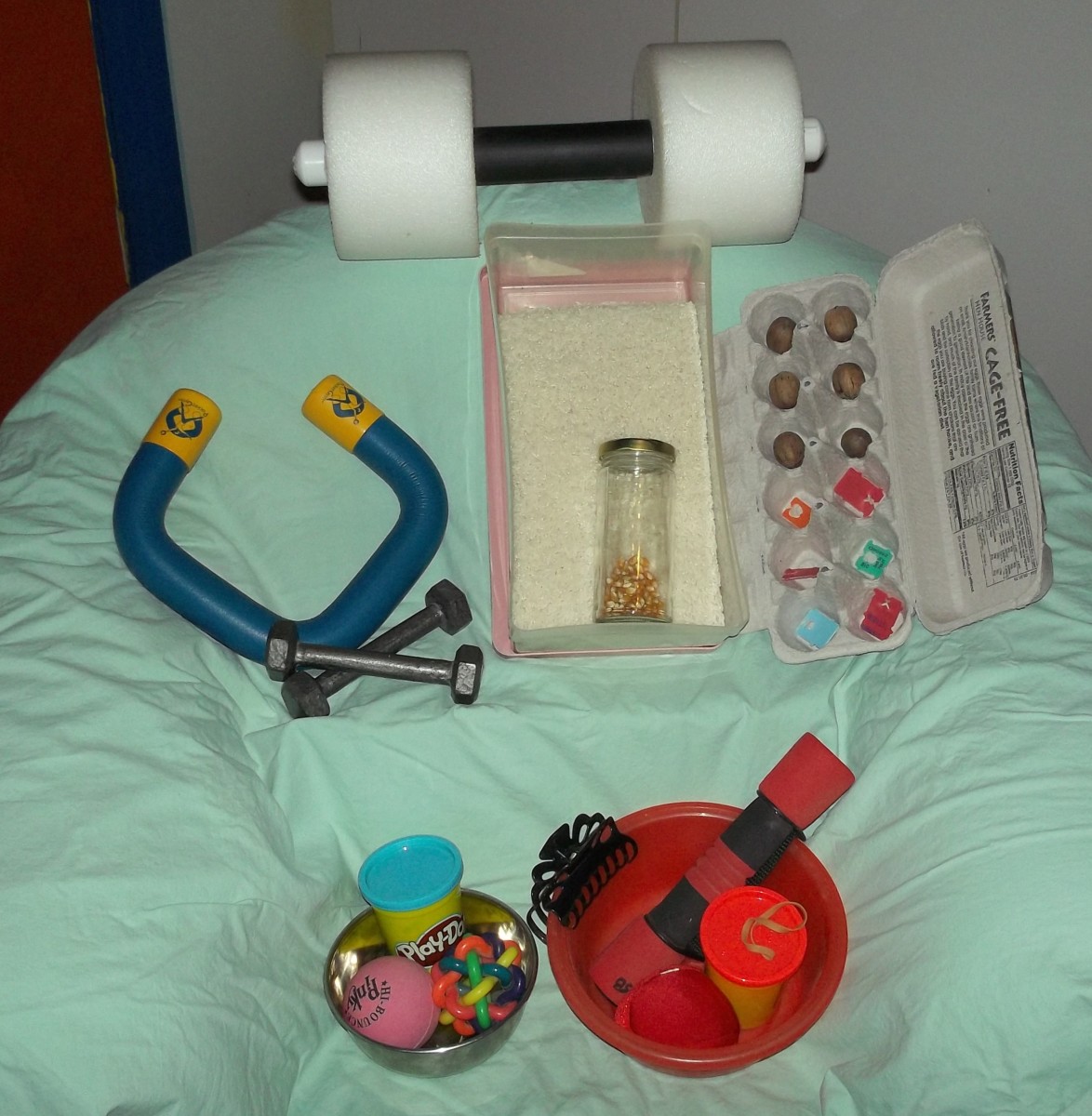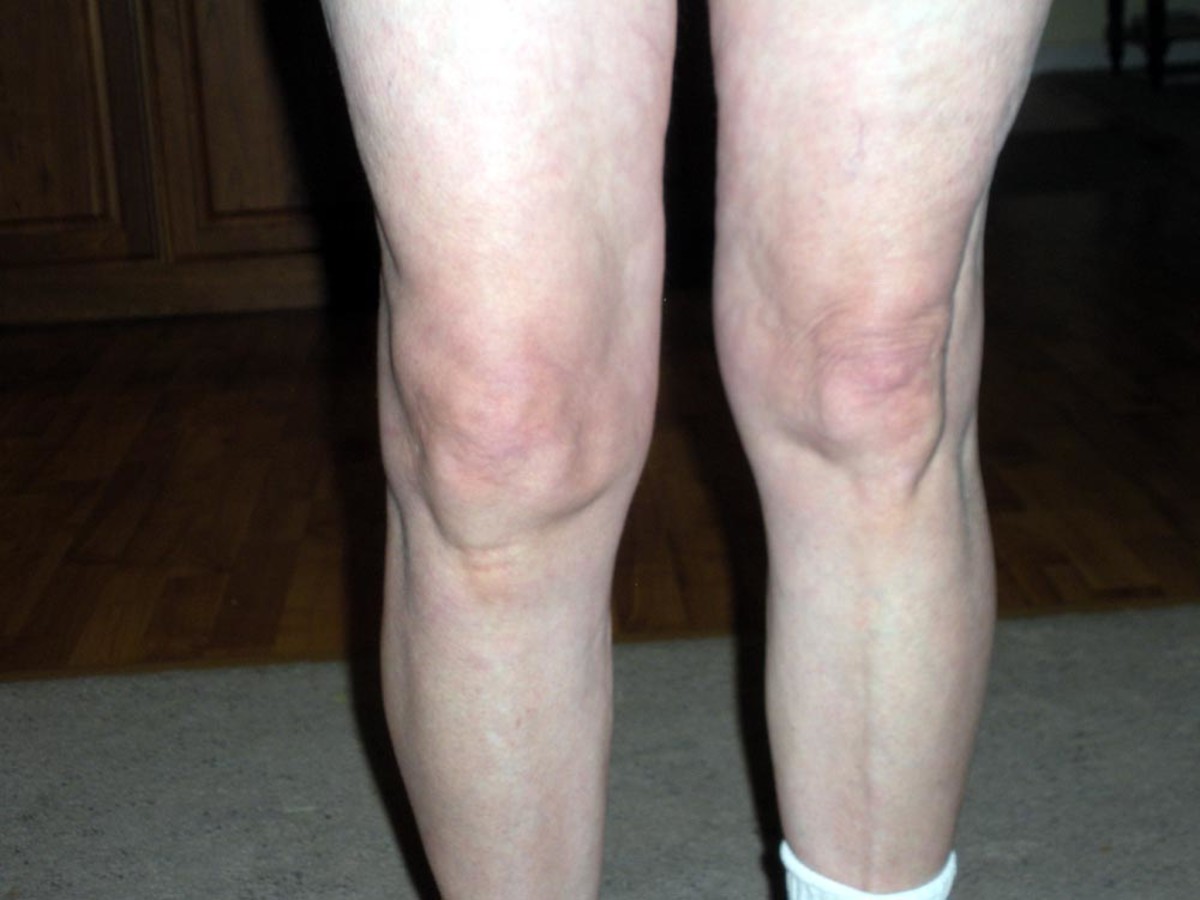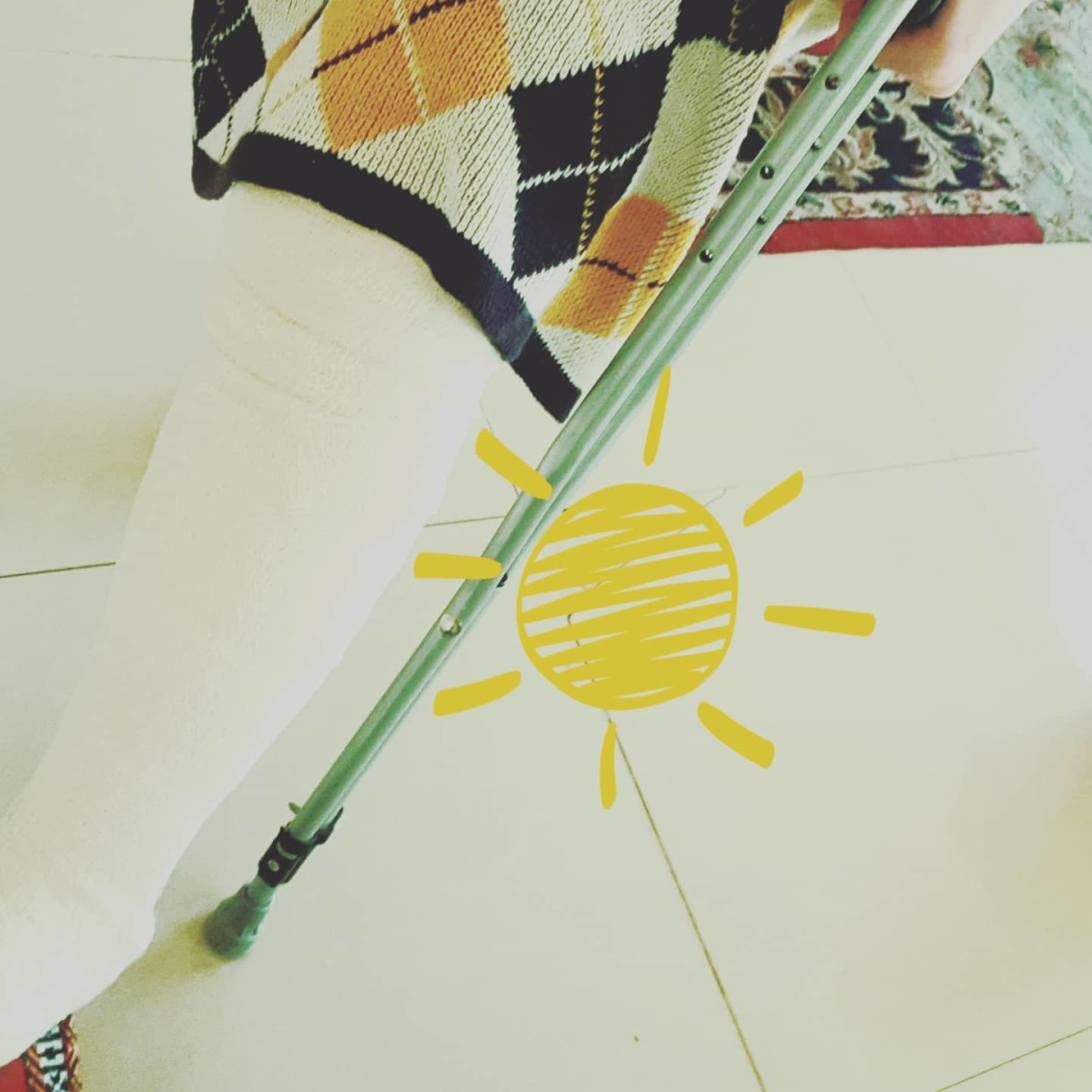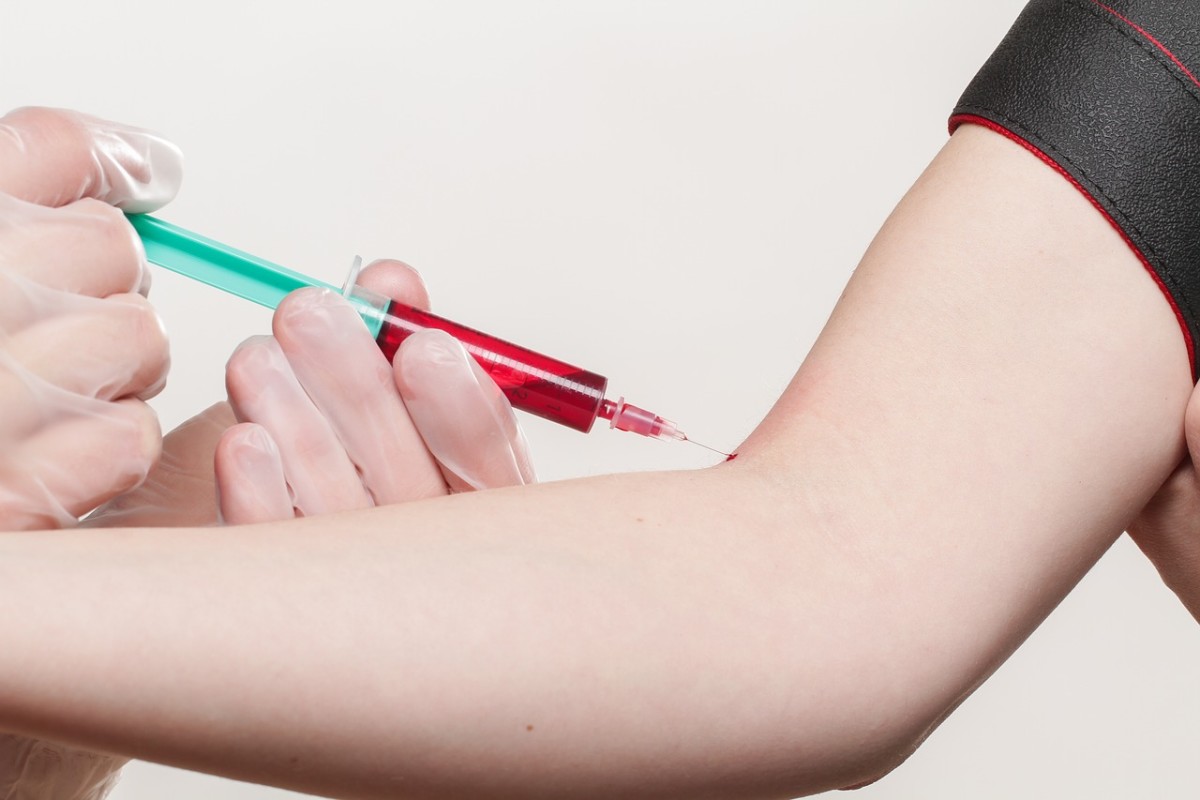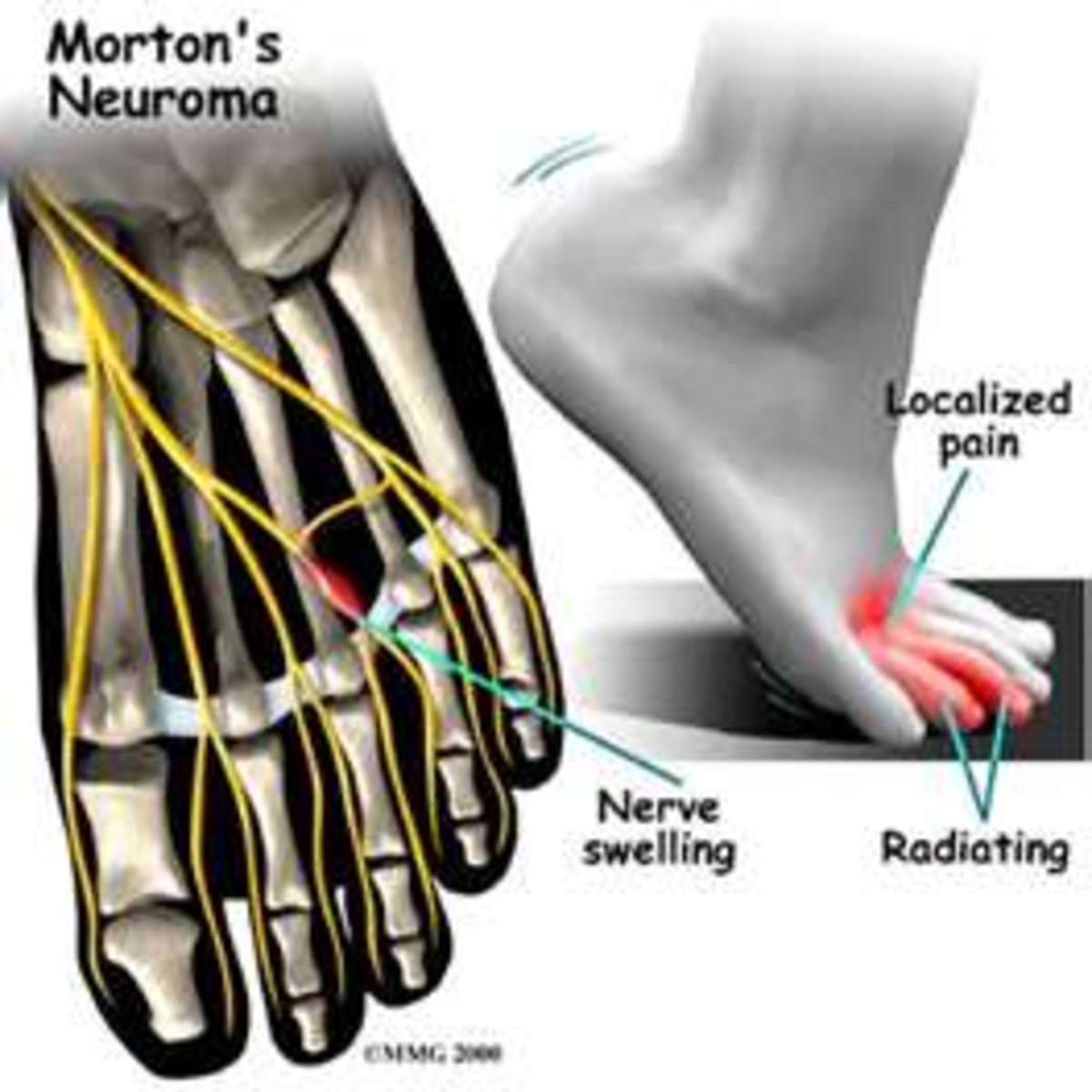How To Cope With A Broken Leg: Broken Leg Recovery And Physical Therapy
How I Broke My Leg
Two years ago, I broke my leg when I stepped wrong off of a bus that had parked over a pothole. My ankle caught as I stepped down and I ended up breaking my fibula and tearing ligaments. I won't mince words: it hurt like hell.
But the worst part came soon afterward when I saw an orthopedic surgeon. He had to push my bone back into place so it could heal properly -- and oh my God, I thought I was going to die. That was seriously the worst pain I've ever been in.
Two weeks later, I had surgery and a plate was put into my leg. The surgery went well and I was up and walking again four months after. Still, a lot went on between my surgery and my recovery from a broken leg. It took some work to get well, but it was worth it.
These days, my leg is almost 100 percent. There are days when I can still feel a slight twinge, like when it's raining. And my plate often goes off in airline metal detectors, which is annoying. But I can run, dance and completed a five-mile walk last October. So if you broke your leg, don't despair! I know that it feels as if it will take forever to heal, but t WILL heal.
Note: I am NOT a doctor or an orthopedist. I'm just sharing my story of recovery so that people with broken legs will have a realistic idea of what to expect. Definitely see a professional when getting your leg examined.
Broken Leg Recovery
Broken Leg: After The Surgery
The two weeks leading up to my broken leg surgery were so crazy that getting the actual surgery was something of a relief. I felt as if I were done and could finally relax, heal and move on. But there was a tough road ahead.
For one thing, there were many orthopedist appointments in the following weeks -- and many cast changes. When I had the surgery, they put me in a temporary semi-hard cast. Once the swelling went down, though, they had to switch me into a regular hard cast and remove the stitches. I'd never had stitches prior to this so I was nervous about having them pulled out. It didn't hurt too much, but it did pinch.
Getting the hard cast was another story. How your leg is handled, of course, depends on which part of your leg is broken. This will also dictate which type of cast is put on your leg. In my case, the cast went from below my knee to my ankle (with my toes exposed). The challenge in putting on such a cast, however, was that my doctor had to make sure that my foot and ankle were properly aligned so that the bones healed correctly. This meant a lot of pushing, prodding and manipulating of my ankle ... and it hurt! It didn't hurt quite as much as it had when my bone was popped into place, but it was still pretty painful.
I was originally supposed to get the hard cast and come back five weeks later. But I cried so much during the procedure that the orthopedist's assistance were unable to fully flatten my foot and my doctor had me return two weeks later. This time, HE set my cast and ignored my cries of pain. But the cast was securely set in the way it was meant to be.
Though I didn't enjoy this experience, one fun thing is that they now make casts in all different colors. My first hard cast was a navy blue and for my second, I chose shocking neon pink. I figured that after having gone through everything, I might as well have some fun and stand out.
After that, there was a lot of waiting. I was unable to use crutches so my wonderful husband wheeled me everywhere. He got into great shape pushing my wheelchair all over town! He also built a little ramp in our apartment so I could roll around our home in an office chair. I got really adept at using it; I even cooked and cleaned while sitting in that thing.
After a few weeks, I purchased a walker and practiced using that instead of the office chair. Still, I found it difficult to balance on one foot, even with the security of the walker, so I stuck with the wheelchair. But if you have good balance and prefer not to use crutches, you can get a walker that's almost like a scooter, and then move around on that.
Phyiscal Therapy
Getting The Cast Removed
I was originally scheduled to have my cast removed five weeks after my surgery, but when the time came, my orthopedist had bad news for me: my bone hadn't fully healed. This meant I'd have to spend a few more weeks off of my feet. Meantime, he did remove the hard cast (this didn't hurt at all, but the machine that's used is very loud) and had me wear a cam walker boot. This is a cast that looks like a big moon boot and supports your foot. It straps on with velcro and the type I purchased included air vents so you could pump it full of air for cushioning. And yes, you do have to purchase it yourself. We got it at the same store from which we were renting my wheelchair. Your doctor can recommend stores in which to buy one.
Once my cast was off, I couldn't believe how awful my foot looked. It resembled a small, shruken chicken breast because the muscles had atrophied so much. My doctor assured me that with physical therapy, it would return back to normal.
For the next three weeks, I used the cam walker, but was still not allowed to put weight on my foot. The good news was I could now remove my cast at night so I felt more comfortable sleeping. But the bad news was, the cam walker was really bulky and uncomfortable. I much preferred the hard cast, which was streamlined to fit my foot.
In order to heal my bone, the orthopedist had me use my own portable ultrasound machine. They often use this in phsyical therapy sessions, but by having my own, I could use it each day. It was really easy to use; I put some gel on the end and then secured it around the proper spot on my leg (the orthopedist will show you where to place it as it depends on the location of your injury). I then turned it on and a timer automatically counted down the 20 minutes. It didn't feel like anything; it just vibrated a little. But the waves stimulate bone growth.
FYI, most insurances cover this machine, but the orthopedist gave me a sample. This way, I could get it for free instead of having to pay the insurance's amount, which probably would've been a few hundred dollars. So if you're told to get an ultrasound machine for bone healing, ask about getting a sample.
Phyiscal Therapy Exercises For A Broken Ankle
Useful Links On Broken Legs And Health
- How To Cope With A Broken Leg
Breaking your leg can be painful, confusing and scary. Here's my experience of breaking my leg, as well as some tips for dealing with a broken leg and tips for dealing with surgery. - How To Lose Weight With An Injury
Losing weight is difficult enough, but is even more so when you're injured and can't exercise the same way as before. Here are tips on how to lose weight with an injury. - MyBrokenLeg.com - Broken leg stories and advice
MyBrokenLeg.com - the site for people with a broken leg. - WebMD - Better information. Better health.
The leading source for trustworthy and timely health and medical news and information. - American Academy of Orthopaedic Surgeons - AAOS
- Getting A Massage For The First Time: First Time Massage Story
Getting a massage for the first time was interesting, to say the least! Here is my first time massage story, as well as tips for getting a massage. - APTA - American Physical Therapists Association
Physical Therapy For A Broken Bone
While I was still in the cam walker, I began physical therapy. Many insurance companies cover a certain number of sessions, say 20, but I was fortunate because my insurance covered everything. I went two-three times a week for about four months.
At first, I was still unable to stand so the physical therapist had me do exercises right from my wheelchair. She had me flex my foot, rotate my ankle and lift my leg with a light weight attached. I had to do about 30 reps of each. Prior to each session, she'd put heat on my leg for 20 minutes. She'd then massage my foot (this was my favorite part!) and then at the end of each, she'd have me ice my foot for 10 minutes.
Meantime, my doctor finally gave me the go-ahead to start walking again. I was so nervous; I was afraid that it would hurt a lot to put weight on my leg. It didn't, but it felt weird. My leg was sore and felt very, very weak. I had to grip the staircase railing to even stand and I could barely lift my leg -- I had to kind of shuffle it -- because the muscles had worn away so much. Even worse, my back muscles had atrophied, as well, since I'd been in a wheelchair. So it hurt my back to stand for more than two minutes.
Still, my orthopedist advised me to "be aggressive" when it came to getting my strength back so I worked my butt off in physical therapy. They had me do a series of weight bearing exercises, which included squats, standing on one leg and holding the other out and step-ups. At first, I could only do one set of exercises before I needed to sit back down and rest my back, but as time went on, they became easier. I did them at home each day, too, so I could continue them on days when I wasn't at PT.
As my strength increased, the physical therapist gave me more intense exercises to do. I had to stretch my foot on a balance board and walk around a series of cones so that I could increase my balance. I also walked on a treadmill and rode an exercise bike for 10 minutes at a time.
At home, I worked out, as well, and practiced taking steps with my walker. First, I walked the length of our apartment. I remember being so proud that I could walk from our bedroom to our kitchen by myself! I then took longer walks going outside. I had to stop several times as I walked 30 feet up our block, but I took things slowly and kept adding time and distance.
Four months after my injury, I was back at work. My walking still wasn't 100 percent, so I took the walker with me. I also continued with PT, going twice a week and on weekends. The physical therapist encouraged me to ditch the walker, but I was nervous about walking around the city without it.
Once I felt that I was secure enough to walk without support, I ditched the walker. My therapist was so happy! I also started going to PT fewer times per week as I needed less help.
Finally, I was through with PT six months after my injury. Around that same time, my orthopedist also declared that my bone was fully healed. I could stop seeing him and get on with my life.
Broken Leg Recovery
Though my leg was technically healed and I was done with PT, it still took me about a year to get back to normal. Until then, I walked with a limp and my leg felt very weak. It was especially hard to function during the winter when the roads were covered with ice and snow. I had to skip work a few times because I didn't feel as if I were secure enough to walk on the slippery ground. I could walk, but could only do so for a short amount of time before I needed to sit and relax my back. The back pain was the worst part.
The next spring, we went to Greece on vacation. I had to stop often as we walked around Athens and Santorini, but it did me good. After that trip, my leg felt so much stronger and I had such better balance. I started to take longer walks and eventually did that five-mile charity event.
These days, my leg is in decent shape and you'd hardly know that I broke it, save for the surgery scar. The one area in which I have trouble is getting down stairs; I still have to do that slowly, but really, I can hike and dance, and do anything.So with that in mind, here are some tips for improving your recovery:
1. Pick a reputable physical therapist and make sure that you actually do PT exercises while you're there. Some places simply have their patients sit with heat on their legs, and some cater to patients who don't want to work out. Work out. It stinks, but it helps.
2. Do your exercises at home, too. If your therapist instructs you to do them three times a week at home, listen and be diligent about it. But at the same time, don't overdo it. If she tells you to do 30 reps, don't do 40. You don't want to reinjure your leg.
3. Once your orthopedist gives you to go-ahead, walk as much as possible. Again, make sure it's okay first. But do as much as you can to build up your muscles.
4. Even when your leg is officially recovered, keep exercising. I should've done more of this and didn't until later on. Per your doctor's approval, walk, bike, swim -- do anything to strengthen your muscles.

